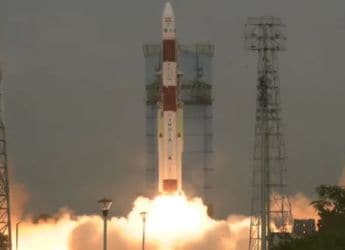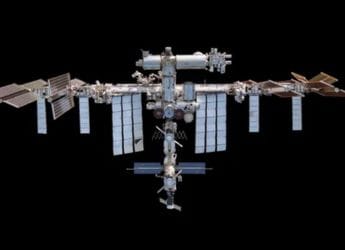- Home
- Transportation
- Transportation News
- Tesla Model X on 'Autopilot' Sped Up, Didn't Brake Before Crash: NTSB
Tesla Model X on 'Autopilot' Sped Up, Didn't Brake Before Crash: NTSB
A Tesla running on "Autopilot" that hit a highway safety barrier in March didn't try to turn away, didn't brake, and in fact accelerated significantly 3 seconds before the deadly impact, federal investigators said Thursday.
The car went from 62 miles per hour to 70.8 mph, then hit the California highway barrier with such force that the front of the vehicle was ripped apart, according to the National Transportation Safety Board. The driver's hands were not detected on the wheel in the six seconds before the collision, investigators said.
Walter Huang, 38, who was wearing his seatbelt, was pulled from the blue Tesla by bystanders before the car was engulfed in flames. He died at a hospital.
Tesla says it is "extremely clear that Autopilot requires the driver to be alert and have hands on the wheel."
The NTSB's preliminary report on the crash adds to questions that have been raised about the safety of Tesla's "Autopilot" technology. It is not a driverless system, but is often treated as one by drivers.
Telsa executives - who have been locked in a clash with the NTSB that left them outside the federal investigation - did not immediately comment on the findings, instead pointing to a March blog post that notes the safety benefits of the company's technology.
In that earlier statement the company said "the driver had about five seconds and 150 meters of unobstructed view ... but the vehicle logs show that no action was taken."
Federal investigators did not provide a probable cause of the crash, and the inquiry is ongoing. But the NTSB said Huang was relying on Autopilot's advanced driver assistance features at the time of the crash: "traffic-aware cruise control," which is meant to keep the vehicle a safe distance from other cars, and "autosteer lane-keeping assistance," which is meant to help guide the car safely down the highway.
Autopilot was being used continuously for the last 18 minutes and 55 seconds before the crash, investigators said. Toward the beginning of that period, the car "provided two visual alerts and one auditory alert" for Huang to put his hands on the wheel, according to the NTSB.
"These alerts were made more than 15 minutes prior to the crash," according to the report. It is unclear why the alerts did not continue.
In the minute before impact, Huang's hands were detected on the wheel three separate times, totalling 34 seconds. But they weren't detected on the wheel during the last 6 seconds, the NTSB said.
Experts in human behaviour and auto safety have warned about the dangers of drivers becoming overly reliant on semi-automated features. That has lead some technology developers to focus on fully driverless technology, which requires nothing from passengers. Tesla has defended its iterative approach, arguing that its features, in conjunction with attentive humans, are already providing for significantly safer cars.
Driverless testing, which is not regulated by federal officials and is done widely on public roads, has also had problems. The NTSB found last month that one of ride-sharing giant Uber's driverless cars misidentified a pedestrian before it hit and killed her in Tempe, Ariz., in March. Uber had deliberately disabled the emergency braking system on the vehicle, the NTSB found.
In the Telsa incident, on southbound US Highway 101 on March 23, Huang was travelling in the second lane from the left, a high-occupancy-vehicle lane. Eight seconds before the crash, "the Tesla was following a lead vehicle and was travelling about 65 mph," the speed limit, according to the NTSB.
At 7 seconds, the Tesla, still following the car ahead, "began a left steering movement." At that point, it entered a "triangular-shaped boundary" between the main travel lane and an exit lane.
At 4 seconds before the crash, the Tesla "was no longer following a lead vehicle."
At 3 seconds, the car sped up to almost 71 mph, then smashed into a safety device called an "attenuator," which is supposed to act as a "smart cushion" reducing the severity of a high-speed impact. But the safety device had been smashed 11 days before by a Toyota Prius.
Tesla said earlier that "the reason this crash was so severe is because the crash attenuator, a highway safety barrier which is designed to reduce the impact into a concrete lane divider, had been crushed in a prior accident without being replaced. We have never seen this level of damage to a Model X in any other crash."
In April, Tesla and the NTSB took the unusual step of parting ways, and the company is no longer a party to the investigation. They differ on whether Telsa was pushed from the inquiry. The NTSB had objected to Telsa making statements concerning the cause of the crash before the investigation is complete, while Telsa accused the agency of releasing incomplete information and "trying to prevent us from telling all the facts."
In one of the disputed statements, Tesla said "the crash happened on a clear day with several hundred feet of visibility ahead, which means that the only way for this accident to have occurred is if Mr. Huang was not paying attention to the road, despite the car providing multiple warnings to do so."
The company said it empathises with the family's grief, "but the false impression that Autopilot is unsafe will cause harm to others on the road."
© The Washington Post 2018
Catch the latest from the Consumer Electronics Show on Gadgets 360, at our CES 2026 hub.
Related Stories
- Samsung Galaxy Unpacked 2025
- ChatGPT
- Redmi Note 14 Pro+
- iPhone 16
- Apple Vision Pro
- Oneplus 12
- OnePlus Nord CE 3 Lite 5G
- iPhone 13
- Xiaomi 14 Pro
- Oppo Find N3
- Tecno Spark Go (2023)
- Realme V30
- Best Phones Under 25000
- Samsung Galaxy S24 Series
- Cryptocurrency
- iQoo 12
- Samsung Galaxy S24 Ultra
- Giottus
- Samsung Galaxy Z Flip 5
- Apple 'Scary Fast'
- Housefull 5
- GoPro Hero 12 Black Review
- Invincible Season 2
- JioGlass
- HD Ready TV
- Laptop Under 50000
- Smartwatch Under 10000
- Latest Mobile Phones
- Compare Phones
- Vivo Y500i
- OnePlus Turbo 6V
- OnePlus Turbo 6
- Itel Zeno 20 Max
- OPPO Reno 15 Pro Mini 5G
- Poco M8 Pro 5G
- Motorola Signature
- Vivo Y50e 5G
- Lenovo Yoga Slim 7x (2025)
- Lenovo Yoga Slim 7a
- Realme Pad 3
- OPPO Pad Air 5
- Xiaomi Watch 5
- Huawei Watch 10th Anniversary Edition
- Acerpure Nitro Z Series 100-inch QLED TV
- Samsung 43 Inch LED Ultra HD (4K) Smart TV (UA43UE81AFULXL)
- Asus ROG Ally
- Nintendo Switch Lite
- Haier 1.6 Ton 5 Star Inverter Split AC (HSU19G-MZAID5BN-INV)
- Haier 1.6 Ton 5 Star Inverter Split AC (HSU19G-MZAIM5BN-INV)

















